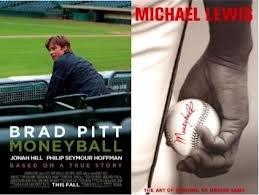Hooray…I Failed!
 What have you failed at lately? Do you brag about it to others? I don’t know about you, but I have tried a lot of things and I have failed at a lot of things. Most people think that it reflects badly on you to fail and then to share what you have failed at doing. I was that way when I was younger and was embarrassed and shy about discussing things that didn’t go so well. Now, I don’t feel that way, because I realize that these attempts have led to my successes.
What have you failed at lately? Do you brag about it to others? I don’t know about you, but I have tried a lot of things and I have failed at a lot of things. Most people think that it reflects badly on you to fail and then to share what you have failed at doing. I was that way when I was younger and was embarrassed and shy about discussing things that didn’t go so well. Now, I don’t feel that way, because I realize that these attempts have led to my successes.
How do you become successful if you don’t try? Ask anyone that has achieved success and they will tell you, it was not a straight line from where they started to whatever place they realized their relative success. They will tell you it was filled with a few big failures, or maybe a bunch of small ones, but whatever the case, there were failures along the way.
Let’s look at some of mine. I started a comic business when I was about 12, and invested in a bunch of comics that didn’t sell. Then my brother, Mark, and I bought some equipment ($15k) to take pictures and place the pictures on tee shirts, cups, calendars, and just about anything. That took a while to pay off. My partner in the financial planning business, Robert, and I started an investment newsletter that went for naught. Then, even with the success of our first mutual fund, I had the idea to start the iFund, which was the first fund run by the shareholders. That was about $500k down the drain.
My current partner, Rich, and I invested in the franchise 1-800-Got-Junk that couldn’t compete with an established brand in our local market. That was a lot of headaches and an expensive education. Then a few years back, there was the software application, called FlockGPS, that didn’t make it, which was a side project within our software company. So as you can see, failure is a part of the process. And if you are not failing, in my opinion, you are not going anywhere.
This was supported in a video I saw posted on LinkedIn recently, reiterating my point. Sara Blakely, who is the founder of Spanx, talks about how her dad asked her at the dinner table, “What have you failed at today or this week?” He spoke like it was something to be proud of, and if you were not failing, you were not pushing hard enough. Sara pushed hard enough to become the youngest female billionaire in the world, doing it all on her own. Check out her CNN interview.
I remember listening to Jim Clayton of Clayton Homes, at one of our EO events. He sold his company to Berkshire Hathaway for something like a billion dollars when he said, you will not be truly successful, until you have had at least one bankruptcy. That was something that made me go hmmmm.
So….what have you done this past week, month or year to fail?







